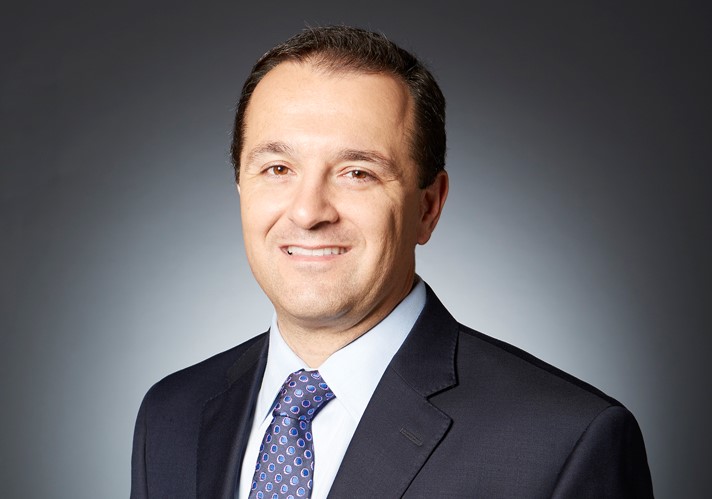Q2 2022 Strategy & Market Reviews
Each quarter, our Investment Management teams publish their key observations and portfolio updates across Global Equity and Fixed Income markets. This is a summary of our views for the Second Quarter of 2022. You can download the full reports via the links shown below.
KEY OBSERVATIONS
The S&P500 officially entered a bear market on June 13th after it fell -21.8% from its January 3rd high. Any decline over -20% is considered bear market territory. In the second quarter, the S&P500 total return was -16.1% in US dollars or -13.5% in Canadian dollars. The TSX total return was -13.2% in the second quarter.
A main cause of this decline was the May CPI inflation data, which pressured the Federal Reserve (Fed) to increase the federal funds rate by 75 basis points in June. Inflation is far more pervasive than the Fed originally believed, and in its June 15th press release, it became abundantly clear that its primary goal had become fighting inflation, potentially at the expense of the labour market and economy.
If there is any good news, it might be that the Fed’s forward guidance on interest rates appears to have caught up with the market implied rates, but there is still a long way to go to get to the Fed’s target level of 3.8% by the end of 2023 as we are currently only at 1.5-1.75%. The market’s focus will now likely shift to whether the Fed can engineer a soft landing or not.
According to BMO Capital Markets, the return of the average non-recessionary bear market going back to 1945 was -27.6%, and if we don’t enter a recession, we are pretty much there. However, the average recessionary bear market return is -34.8%, which implies more financial pain if we do enter a recession.
On the flip slide, average bull markets last almost five times longer than bear markets, and produce cumulative price gains of 156%. Although it’s tough to determine the exact bottom of a bear market and start of a new bull market, it’s critical to be invested at those times.
We are currently happy to hold some extra cash reserves, and concentrate on owning companies with lower volatility, consistent earnings and strong and growing dividends. Some positive signals we will watch for include signs of peaking inflation, higher unemployment, and a shift in Fed policy. A higher level of capitulation in stocks could create a valuation reset and potentially a compelling entry point.
NORTH AMERICAN EQUITY UPDATE

Peter Jackson, HBSc, MBA, CFA
Chief Investment Officer
Portfolio Manager, North American Equities
During the quarter, our overall equity exposure decreased another 4% to 89%. Our US equity exposure decreased from 43% to 39% while our Canadian exposure was flat at 50%. Cash increased from 7% to 11%. Since many of our clients’ portfolios are invested in equities through our North American plus International Equity strategy, their actual weights in US and Canada will be proportionately less than this given the allocation to international companies.
Our portfolio is positioned toward value-oriented stocks that typically trade at or below market earnings multiples, while maintaining exposure to growth stocks at around 1/3 of the portfolio. During the quarter, we added several new stock positions:
- Bank of Montreal took the place of TD bank in our portfolio at the end of the first quarter of 2022. BMO looks stronger on several fronts, including loan growth, credit cards and earnings forecasts.
- Keyera Corp is a Canadian midstream energy company with an attractive pipeline of projects, significant earnings from fee-for-service, insulation from commodity prices, and a dividend yield of more than 6%.
- Primaris Real Estate Investment Trust is a Canadian shopping centre REIT with a focus on secondary markets in Canada. It trades at a deep discount to its net asset value and sports a 6.4% dividend yield.
- CT Real Estate Investment Trust is arguably the lowest-risk holding in the Canadian portfolio, with a 99.3% occupancy rate, 96.1% of tenants being investment grade, and a 5.4% dividend yield.
- Johnson & Johnson has leadership positions across a wide number of healthcare segments with 20-year compound annual growth of 8% earnings per share and 60 consecutive years of dividend growth.
A complete review of the business and fundamental outlook for each company can be found in my full report.
GLOBAL EQUITY UPDATE

Phil D’Iorio, MBA, CFA
Portfolio Manager, Global Equities
To say that the first half of 2022 has been tumultuous is an understatement. To put things in perspective, the S&P 500 had its worst first half in more than 50 years. These challenges were global, with market indices also falling 15-20% across Europe, Asia, and Emerging Markets.
The reasons are well known, including persistent inflation, supply chain disruptions, the war in Ukraine, and a hawkish tone from the U.S Federal Reserve and other central banks.
During the quarter, we took a more defensive posture by reducing exposure to cyclical sectors like Technology, Banking, and Consumer Discretionary. We sold JPMorgan, Taiwan Semiconductor, Facebook, HDFC Bank, Adidas, and Silicon Valley Bank. Some of the proceeds went to the Consumer Staples and Healthcare sectors, as these companies tend to offer stable free cash flow and less risk of large earnings downgrades. Some of the stocks we bought include Johnson & Johnson, Nestle, GlaxoSmithKline, Diageo, and AstraZeneca.
Instead of worrying about a recession that is just around the corner, it’s worth considering the possibility that we are already there. Economic recessions are defined as two consecutive quarters of negative GDP growth. First quarter 2022 US GDP was -1.6% and, according to the Federal Reserve Bank of Atlanta’s forecasting model, US GDP growth for Q2 2022 is estimated to be -2.1%.
The real question is how to position a portfolio in light of these conditions. We believe it’s about striking the right balance. We have taken a more defensive tilt and have also raised some cash. We don’t believe that now is the time to abandon equities. Rather, we are preparing a list of stocks so we are ready to deploy our cash opportunistically when we feel the time is right. We remain confident in the long-term outlook for the businesses we own and are satisfied that these companies can weather the storms of inflation and possible recession.
FIXED INCOME UPDATE

Owen Morgan, MBA, CFA
Portfolio Manager, Fixed Income
The second quarter of 2022 echoed many of the themes evident in the first quarter. Inflation in both US and Canada climbed to levels not seen since the early 1980s. The Federal Reserve and the Bank of Canada hiked rates aggressively in response. The impact to financial markets, although not as severe as the first quarter, was steeply negative across most asset classes.
In the early days of the second quarter, Canadian inflation data continued to pick up steam, exceeding expectations in February and again in March. Following a period with much talk but little in terms of concrete action, the Bank of Canada hiked its overnight rate by 50 bps, to 1.00%, on April 14th. This was the largest increase in twenty years, and essentially an admission that conditions had been left too loose for far too long.
In mid-April, U.S. headline CPI (in)famously hit a 40-year high 8.5% year-over-year pace, and producer prices bested that with a blistering 11.2% year-over-year clip. On June 15th, the FOMC delivered a 75 bps hike, bringing the target range to 1.50-1.75%, the largest hike since 1994.
At the time of this writing, interest rate increase fears, while still substantial, are ceding ground to growth fears. Investors are weighing the probability that central banks can engineer price stability while maintaining positive, productive economic growth. That likelihood has weakened in the estimation of many investors over the past quarter.
In our view, inflation is close to, if not at, its peak for the near-term, and while it will likely remain elevated and above the central banks’ long-term target for the next few quarters, it will begin to recede soon. Early signs of this occurring are evident in real estate, metals, and wage growth (albeit the most recent readings of these remain high).
Given that rate hikes are highly likely to occur, we continue to favour the purchase of short duration bonds. We are also favouring higher-quality investment grade bonds in the possible event of recession. Yields are the most attractive they have been in quite some time, and opportunities are beginning to present themselves. We are well-positioned at present and will remain patient until we get a clearer picture of inflation and the path of future rate hikes.



